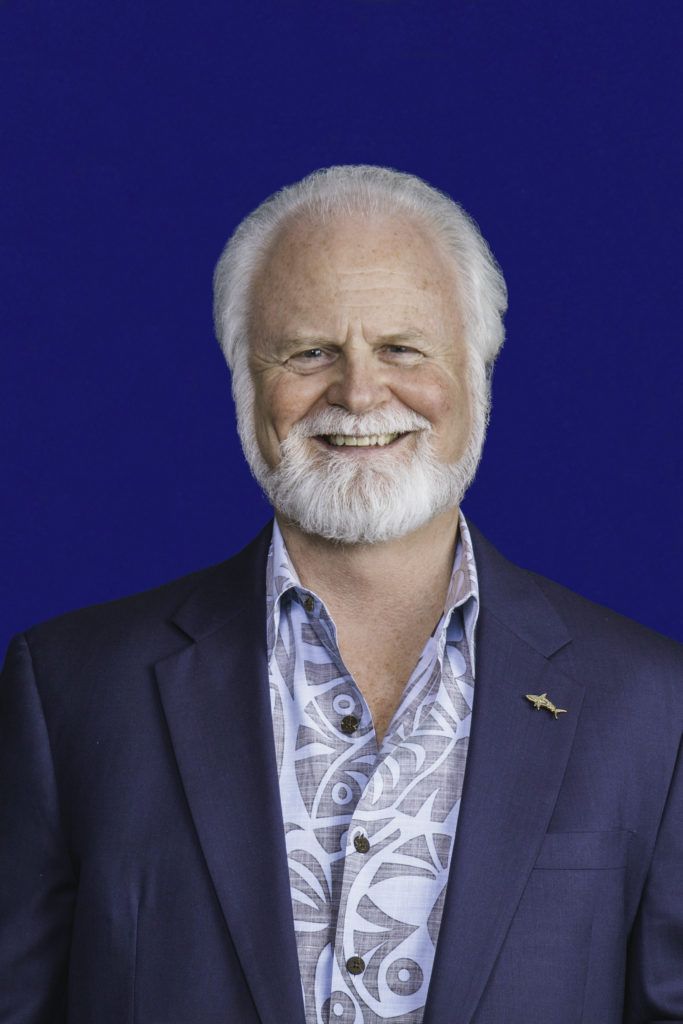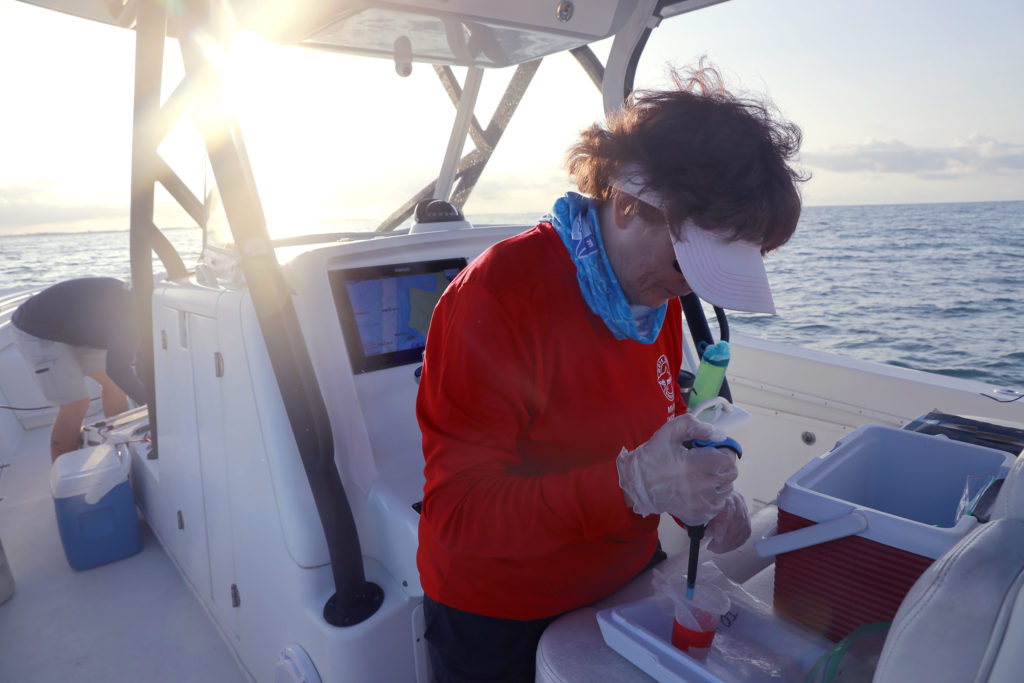
Feature
Celebrating 65 Years of Mote
By Ryan G. Van Cleave
When Dr. Michael P. Crosby joined Mote Marine Laboratory & Aquarium in May 2010, he said it was like he died and went to heaven. “Without a doubt, it’s the most remarkable and impactful marine research and science education organizations I’ve had the honor of being affiliated with, bar none. There is no other ocean-focused research enterprise in the world like Mote.” When you consider the senior level positions he’s held at numerous national and international universities and agencies over his 30+ year career, that’s really a stunning compliment.

What makes Mote so special is its three foundational pillars: passion, partnership, and philanthropy. In fact, those three core qualities are built on how Mote got its start 65 years ago. Dr. Eugenie Clark—“who I had the pleasure of knowing fairly well,” Dr. Crosby notes—was doing incredible research over in the Red Sea in a one-room shack that served as her lab. When she received worldwide publicity because of National Geographic’s coverage of “The Shark Lady,” Anne Vanderbilt read about her and was mesmerized by her passion. The Vanderbilts contacted her and said they’d love for Dr. Clark to relocate to SW Florida and conduct her research there, with their financial support.
With the Vanderbilt’s support in 1965, Dr. Clark started the Cape Haze Marine Laboratory in the Charlotte Harbor area in what was essentially another one-room shack of a lab. “But the culture of Mote is what it is today because of the passion Genie had for her science, the partnership she created with a local shark fisherman, and the generous philanthropy of initially the Vanderbilts and later, Mr. Bill Mote, who become the most amazing benefactor and namesake for the institution,” says Dr. Crosby. He’s quick to point out that the community has been instrumental all along the way, too. They’ve embraced Mote and its mission by supporting it to the point that it could remain independent, which means Mote doesn’t get slowed by government or university bureaucracies and politics.
“Because of the philanthropic support of this amazing community, our scientists, educators, and aquarium biologists have the freedom to follow their passion for the oceans, the way Genie did in the early days,” says Dr. Crosby about the benefits of this independence. “This community should feel a righteous sense of pride in what they’ve helped build.” And that growth continues today with the plans for Mote’s new Science Education Aquarium (Mote SEA), which will be located in Nathan Benderson Park right off I-75.

Mote SEA is only one step in a larger, broader vision. And that vision aims to expand Mote’s research ability as well as their STEM education capabilities. Why is this important? “The oceans are crying out to the world,” Dr. Crosby explains. “So many habitats and species populations in oceans and coastal environments around the world are on the brink of functional extinction. We must expand our capacity for innovative research and science education to address the many challenges the oceans face.”
One answer to facing these challenges is working to expand the level of ocean literacy among the general public. The new Mote SEA facility will be tailormade to do exactly that through informal and formal STEM education. It will be able to handle 700,000 visitors per year, which is double what their current campus handles.
Plus, there will be three million residents—not tourists, but SW Florida residents—who’ll live within a 60-minute drive time of this nexus location. And 43 million vehicles a year will pass by Mote SEA, making this iconic facility a physical, intellectual, and educational gateway to the region.
Academically speaking, it’s exciting to think about the nearly 70,000 area K-12 students who will have access to Mote SEA’s three state-of-the-art STEM teaching laboratories as part of their school’s STEM education plans. Dr. Crosby says, “All of these teaching labs will be made available to the schools throughout the entire region, free of charge. It’s just one of the ways in which we’re giving back to the community. That’s where our Mote SEA funding campaign comes in: Oceans for all.” They want to make sure that every student has an incredible experience, and to make that happen, those labs will have at least one Mote scientist and one Mote educator available every single day.

With the bulk of Mote’s public education efforts being moved to Mote SEA, the current City Island campus will gain 60,000 square feet of space that can be transformed into new research facilities. Mote’s City Island campus will evolve into an International Marine Science Technology & Innovation Park like no other in the world. That’s step two of their Beyond 2020 Vision & Strategic Plan—having increased research efforts to address the challenges our oceans face.
Dr. Crosby couldn’t be more enthusiastic about all of this. “All of this is going to lead, I think, to the establishment of a Silicon Valley of marine science and technology here in Southwest Florida that will be catalyzed by all of us working together to achieve the vision of Mote SEA and the expansion of our campus on City Island.”
Even while in a growth mode, Mote continues to have scientific successes, such as how they’ve developed new technological paradigms for taking a “dead” 50- or 100-year-old coral, reskinning it, and bringing it back into health in only two years. “That program now has state and federal funding, but it started with philanthropy,” explains Dr. Crosby. “Ideas like that sound too outrageous to the government funding agencies, but philanthropists embraced our vision.” The same thing happened with their work on red tide and the snook population enhancement program. Private money got the initiatives growing and allowed the viability to be proven, then public money often followed to expand on those crucial early success.

“Philanthropy is the fuel of innovation,” reports Dr. Crosby. “It’s vital for helping us push forward the frontiers of science. It’s having an incredible impact on the quality of life in our community and the long-term conservation and sustainable use of ocean resources.”
Volunteers, too, are part of what makes Mote work. 1,500 people offer their time and effort each year, whether it’s helping monitor sea turtle nests or diving to place the 30,000 coral outplants that went out during the past twelve months alone. “If we had to hire staff to do all that work, we’d have to raise an additional $5 million each year,” says Dr. Crosby. “We are overwhelmingly powered by volunteers, and they do amazing, important work.” That’s yet another way that the community has taken ownership of what Mote has become.
“We’re not done yet,” Dr. Crosby says. “There’s a heck of a lot more things to do. It’s going to take all of us working together to achieve our Vision for Beyond 2020 and ensure that our oceans are indeed here for future generations to enjoy.”
For more information on Mote Marine Laboratory & Aquarium, please visit www.mote.org or call 941.388.4441.



You must be logged in to post a comment Login